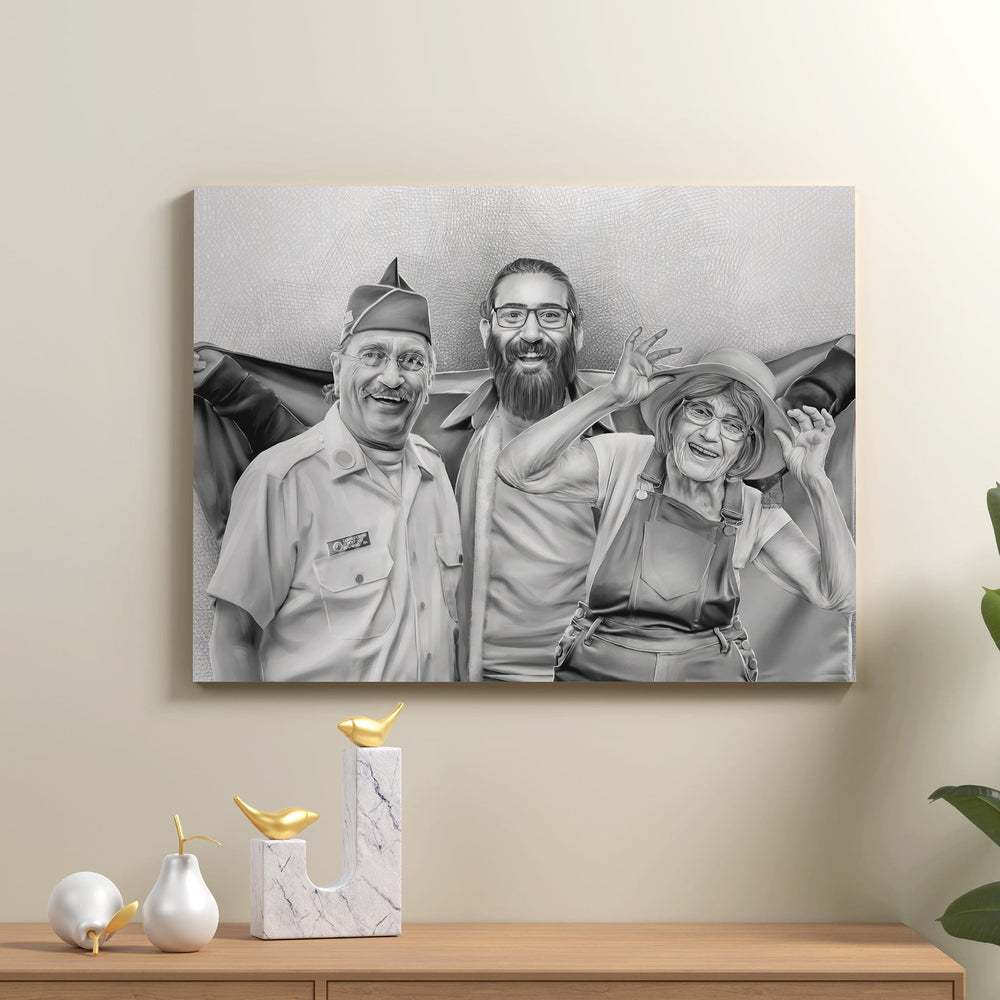How to Clean Old Paintings Safely at Home: An Expert Guide

Artworks, especially those with historical or sentimental value, require careful handling to preserve them. If you're wondering how to clean old paintings, it requires caution, knowledge, and precision. Cleaning old and original paintings at home can be rewarding and fulfilling, allowing you to restore the beauty and vibrancy of the actual artwork.

Photo by Erica Marsland Huynh on Unsplash
With the right approach and a careful touch, you can safely restore these pieces of art right in the comfort of your own home. While professional conservators possess the expertise to handle delicate restoration tasks, there are steps you can take to clean old paintings safely at home.
Understanding Your Painting
Every painting is a manifestation of the artist's vision. Understanding the creative intent behind the artwork requires an exploration of the artist's biography, influences, and artistic style. Old oil paintings have their historical and cultural context. Research the period of these types of paintings, social climate, and artistic movements that influenced the artist.
Determining the Age and Material of Your Painting

Get a customized oil painting for your home here.
The palette of pigments in the painting can offer valuable clues about its age. Certain pigments were popular in specific eras, while others were developed later. Whether it is a watercolor painting, oil painting, or acrylic painting, analyze the color scheme and cross-reference historical pigment availability to estimate the painting's age and paint type.
If you have these valuable paintings, you should know how to store oil paintings or any painting on canvas.
Why Identifying Your Painting's Composition is Crucial

Purchase a painting of your choice of medium here.
Knowledge of paint layers is essential for its cleaning technique and preservation. Different materials age and react to environmental factors in distinct ways. Understanding the type of support, pigments, and binders used can guide conservators in devising appropriate strategies for maintaining the painting's integrity.
Also, storing oil paintings is harder than using other painting mediums. You should know how to differentiate oil paints from acrylic paints.
Preparing for The Cleaning Process
Assessment of the Entire Painting

Order an oil painting of your favorite memories here.
Assessing the entire painting is essential when preparing to clean it at home because it allows you to comprehensively understand the artwork's condition, identify potential areas of concern, and make informed decisions about the cleaning process.
You wouldn't want to unintentionally damage memorial paintings of loved ones due to the wrong cleaning method.
Removal of Loose Dust

Get an acrylic painting for your loved ones here.
Accumulation of dirt happens in the crevices of brushstrokes and texture, obscuring the clarity and vibrancy of the paint. Removing dust reduces the risk of smudging or creating blotchy areas during the cleaning process. You should know how to clean acrylic paintings properly to protect the paint layers from dust scratches.
Spot Testing With Cotton Swabs or a Damp Cloth
Different paintings may require other cleaning methods based on their materials and condition. Spot testing allows you to determine the most effective and safe cleaning method for your painting, whether a gentle swabbing with a clean cloth or a slightly more aggressive approach with a stronger art cleaning product.
Materials Needed to Clean Old Paintings
Soft-Bristled Brush and Cotton Cloth
The bristles of a soft brush and the gentle fibers of a non-shedding cloth are less likely to scratch or disturb the paint layers than harsher materials. Abrasive cleaning materials can cause irreversible damage to the coat of varnish, affecting its appearance and value.
Distilled Soapy Water
Distilled water is free from minerals and impurities that may react with the painting's materials. This minimizes the risk of chemical reactions that could alter the entire surface or cause permanent damage to an old oil painting.
Clean Cotton Swabs
Cotton swabs provide a fine and focused point of contact, enabling you to clean small or intricate areas of the painting with precision. It helps clean delicate details, textured surfaces, or hard-to-reach spots, minimizing the risk of damage and loss of vibrancy of the art piece.
Varnish Remover and Gloss Varnish
After removing the yellowing varnish and cleaning oil paintings, apply a fresh coat of varnish layer to provide a protective barrier. It can help consolidate and protect the paint layers, preventing them from becoming too dry or brittle. However, using varnish types requires expertise and experience, mainly when working with valuable or historically significant canvas paintings.
What to Avoid When Cleaning Old Paintings
Using Stiff Brushes or Paper Towels
Stiff paint brushes and paper towels can scratch the surface of the painting, leading to the loss of paint particles or even entire paint strokes. Additionally, abrasive movements can irreparably damage paintings on canvas and diminish their artistic and historical value.
Applying Excess Water
Some paint pigments, especially in older paintings, can be sensitive to moisture. Excess water can cause pigments to bleed or migrate, leading to color distortion or even paint removal. If not properly removed and dried, excess water can leave residues, streaks, or water stains on the painting's matte surface.
Hiring Untrained Art Restorers
Cleaning an old painting is a highly specialized field that requires expertise. A professional art restorer deeply understands art history, specialized products, techniques, and the science behind conserving an aged oil painting and other mediums.
Maintenance and Preservation
Consulting with a professional restorer is highly recommended to ensure you take the appropriate steps to safeguard the artwork for future generations. Proper care and preservation efforts can help old paintings retain their beauty and cultural significance for years.
Regularly inspect the painting for deterioration, such as flaking paint or cracks on the protective glazing. Early detection can help address issues before they worsen.
Your Art Guide: Learn More About Paintings in Memorialize Art
Memorialize Art covers various painting topics, including techniques, styles, gift ideas, and more. You can access a comprehensive knowledge repository that caters to beginners and seasoned art enthusiasts. With these topics, you can gain a greater appreciation for artistic expression and even find motivation for your own creative endeavors.










